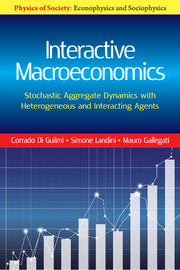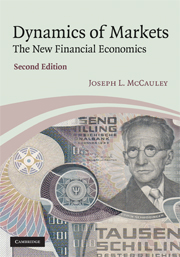Interactive Macroeconomics
One of the major problems of macroeconomic theory is the way in which the people exchange goods in decentralized market economies. There are major disagreements among macroeconomists regarding tools to influence required outcomes. Since the mainstream efficient market theory fails to provide an internal coherent framework, there is a need for an alternative theory. The book provides an innovative approach for the analysis of agent based models, populated by the heterogeneous and interacting agents in the field of financial fragility. The text is divided in two parts; the first presents analytical developments of stochastic aggregation and macro-dynamics inference methods. The second part introduces macroeconomic models of financial fragility for complex systems populated by heterogeneous and interacting agents. The concepts of financial fragility and macroeconomic dynamics are explained in detail in separate chapters. The statistical physics approach is applied to explain theories of macroeconomic modelling and inference.
- Offers statistical mechanics approach to macroeconomics
- Discusses use of statistical mechanics in macroeconomic modeling
- Follows a probabilistic approach for the analytical solution of agent based models
- Systematic treatment of stochastic dynamic aggregation techniques used for multi-agent models
Product details
No date availableAdobe eBook Reader
9781108226158
0 pages
This ISBN is for an eBook version which is distributed on our behalf by a third party.
Table of Contents
- Preface
- List of tables
- List of figures, 1. Introduction
- Part I. Methodological Notes and Tools:
- 2. The state space notion
- 3. The master equation
- Part II. Applications to HIA Based Models:
- 4. Financial fragility and macroeconomic dynamics I: heterogeneity and interaction
- 5. Financial fragility and macroeconomic Dynamics II: learning
- Part III. Conclusions:
- 6. Conclusive remarks
- Part IV. Appendices and Complements: Appendix A: Complements to Chapter 3
- Appendix B: Solving the ME to solve the ABM
- Appendix C: Specifying transition rates
- Index.




